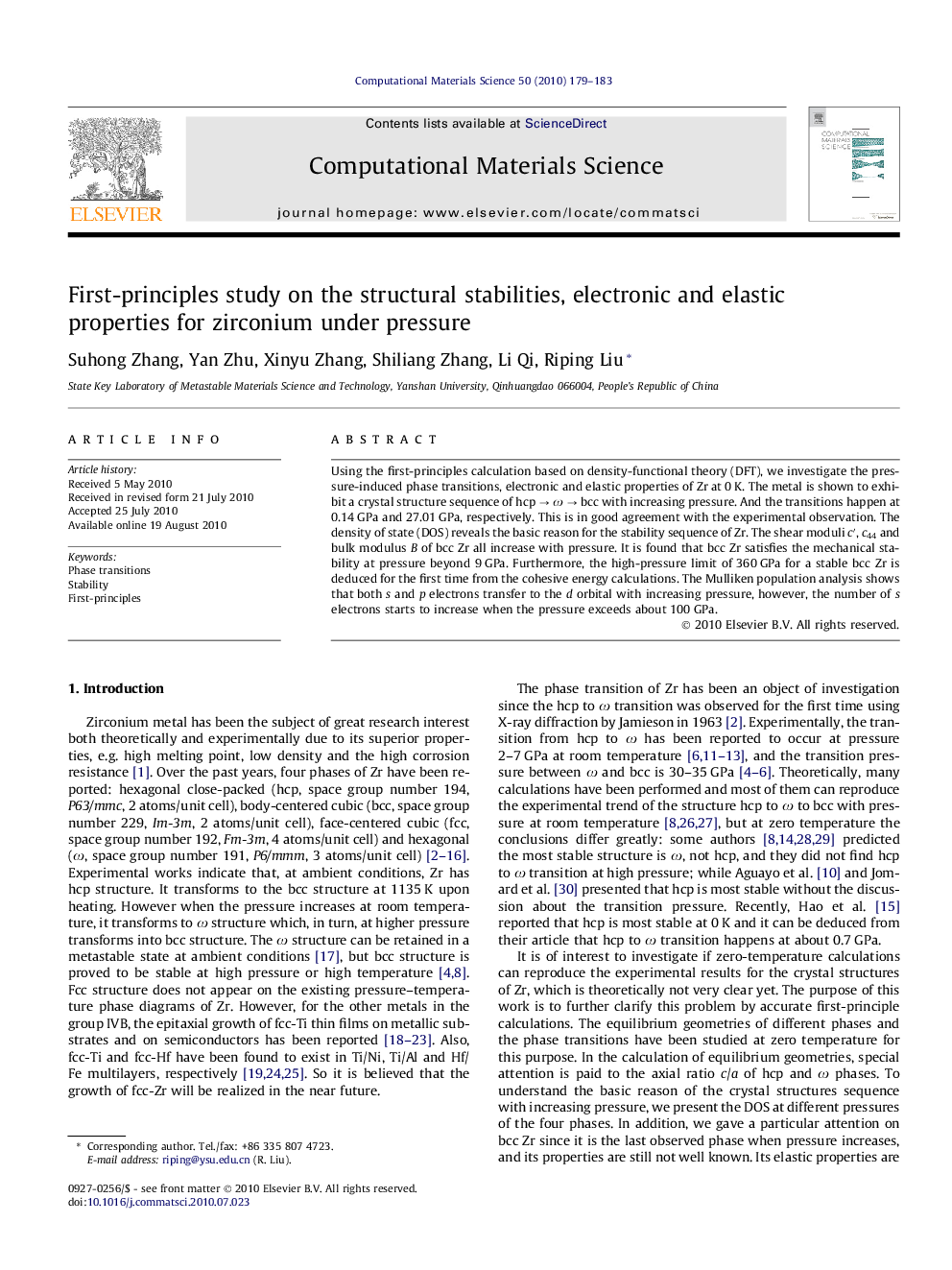| Article ID | Journal | Published Year | Pages | File Type |
|---|---|---|---|---|
| 1562438 | Computational Materials Science | 2010 | 5 Pages |
Abstract
Using the first-principles calculation based on density-functional theory (DFT), we investigate the pressure-induced phase transitions, electronic and elastic properties of Zr at 0 K. The metal is shown to exhibit a crystal structure sequence of hcp â Ï â bcc with increasing pressure. And the transitions happen at 0.14 GPa and 27.01 GPa, respectively. This is in good agreement with the experimental observation. The density of state (DOS) reveals the basic reason for the stability sequence of Zr. The shear moduli câ², c44 and bulk modulus B of bcc Zr all increase with pressure. It is found that bcc Zr satisfies the mechanical stability at pressure beyond 9 GPa. Furthermore, the high-pressure limit of 360 GPa for a stable bcc Zr is deduced for the first time from the cohesive energy calculations. The Mulliken population analysis shows that both s and p electrons transfer to the d orbital with increasing pressure, however, the number of s electrons starts to increase when the pressure exceeds about 100 GPa.
Related Topics
Physical Sciences and Engineering
Engineering
Computational Mechanics
Authors
Suhong Zhang, Yan Zhu, Xinyu Zhang, Shiliang Zhang, Li Qi, Riping Liu,
